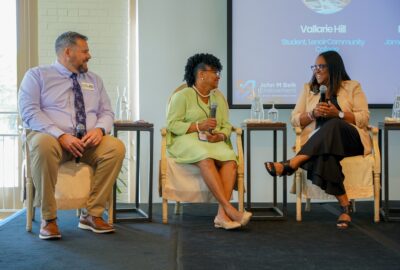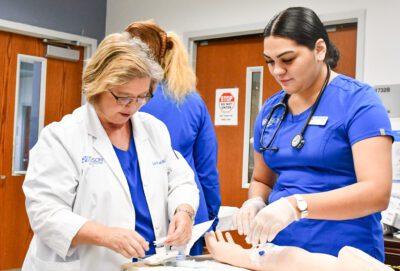
NC Reconnect, an initiative focused on engaging adult learners, has reenrolled more than 4,000 adults with some college but no degree at community colleges across North Carolina since its launch in 2021. Most of these adult “reconnectors,” students between ages 25 and 44, have chosen to earn a credential through a continuing education program rather than a degree program.
As the state prepares to implement Workforce Pell and considers the N.C. Community College System’s (NCCCS) proposed funding model, Propel NC, colleges serving adult students in short-term, skills-based courses must consider how to leverage these new funding streams.
At a “Community of Practice” meeting held on Oct. 29 by the Belk Center for Community College Leadership and Research, leaders from NC Reconnect community colleges received guidance from national and state experts on how to prepare for these funding sources.
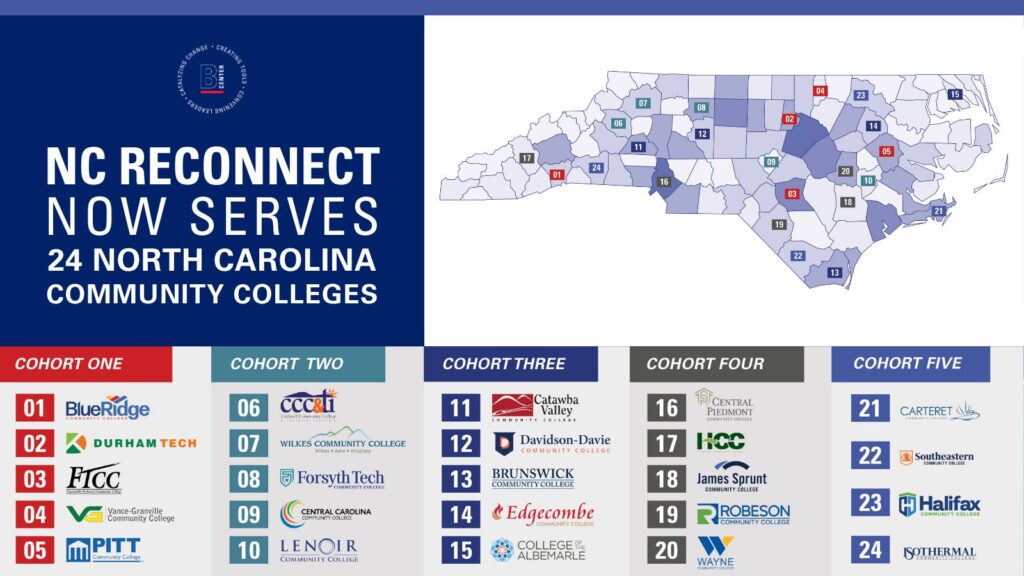
Workforce Pell’s timeline and eligibility requirements
Pell Grants are the main federal financial aid available to college students and have traditionally been limited to programs that are at least 15 weeks long and at least 600 clock hours. In July 2026, the federal reconciliation bill, signed into law by President Donald Trump, expanded eligibility to students in short-term, career-focused programs through Workforce Pell Grants.
Ahead of the program’s intended start date in July 2026, the U.S. Department of Education will begin a process in December called negotiated rulemaking to receive input from stakeholders and define specific parts of the legislation.
Iris Palmer, director for community colleges at national think tank New America, explained to attendees that the Department of Education’s rulemaking timeline means that final rules will likely not be released by July.
Rather than wait for finalized rules from the federal government or the state, Palmer encouraged colleges to use existing information to begin identifying programs at their college that might be eligible for Workforce Pell. That recommendation is one echoed by other national organizations.
“We know actually quite a bit, just based on the legislation. And while there are questions to be answered, we can start to have a sense of, ‘How do we want this run at our institutions, and who do we want to benefit from it?’” Palmer said.
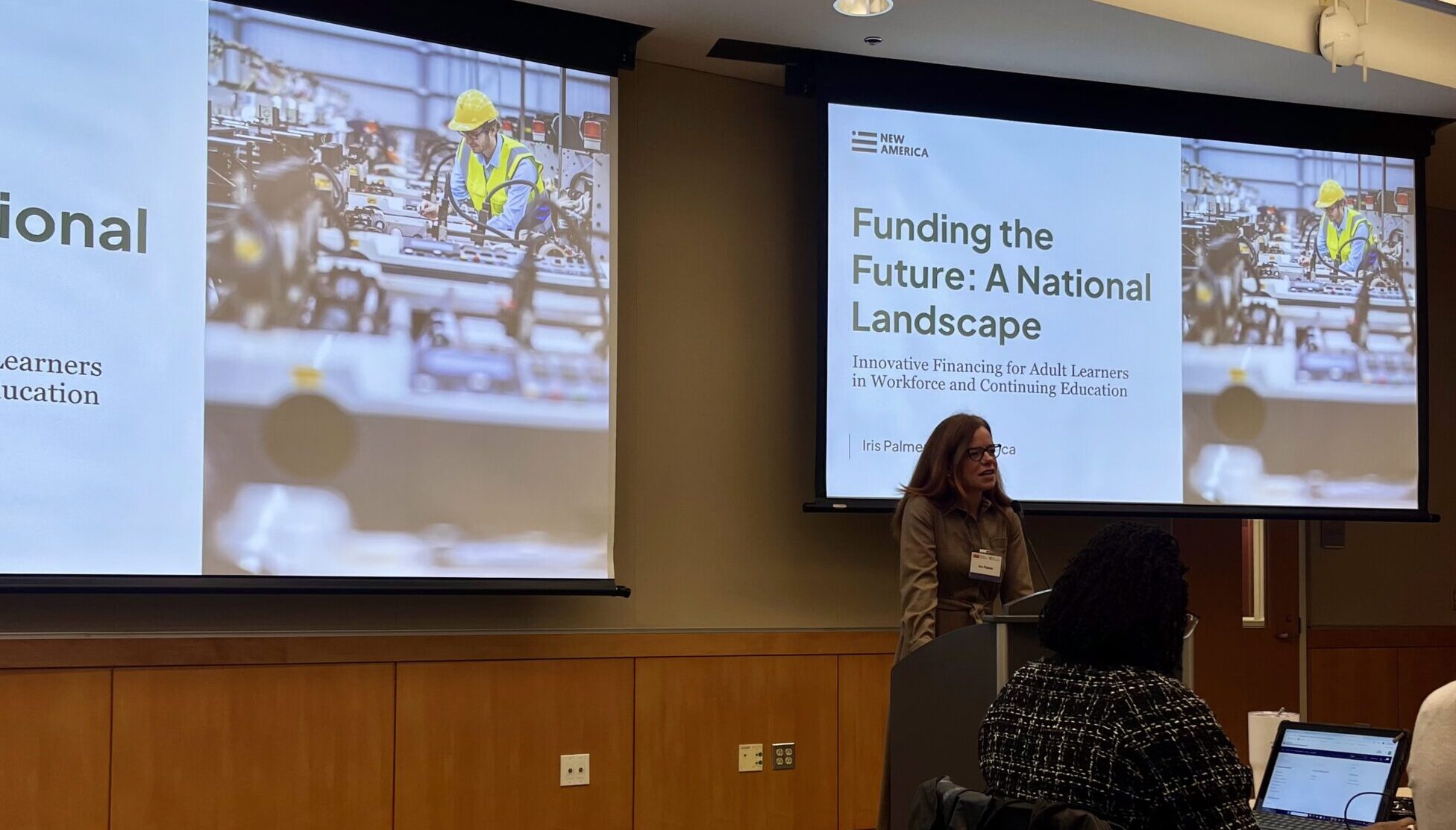
According to legislation, programs eligible for Workforce Pell Grants must be between 150 and 599 clock hours and run between eight and 15 weeks. Programs must also be delivered by an accredited institution, operate for at least one year, and not be a correspondence course.
Each state will set up a process to approve programs based on an additional set of eligibility criteria. Programs must:
- Be aligned with high-skill, high-wage, or in-demand industry sectors or occupations, as determined by the state;
- Meet employer hiring requirements;
- Lead to a recognized, stackable, portable credential across employers, or a credential essential for a specific occupation; and
- Articulate credit into a certificate or degree program at at least one institution.
The Workforce Pell legislation also outlines specific yearly measures eligible programs will need to meet:
- A 70% program completion rate.
- A 70% job placement rate; however, students’ jobs do not have to be in their field of study.
- A novel value-added earning measure to ensure Workforce Pell grants support programs with a positive return on tuition investment.
- A New America article provides examples of this value-added earning that is measured three years after program completion and defined as the median earnings of graduates in their field of study, minus 150% of the federal poverty line.
Read more
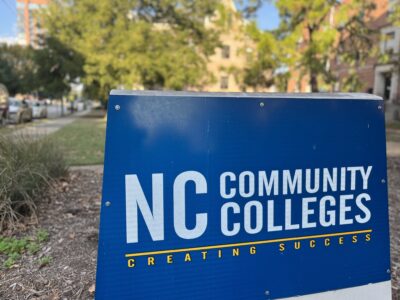
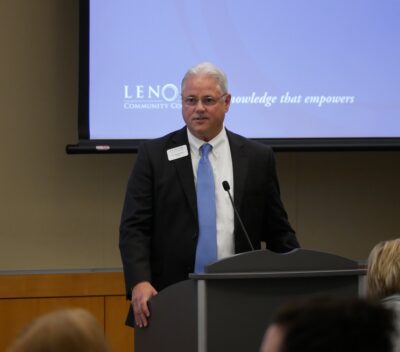
Palmer sees the credit articulation requirement as the most important, and most challenging, for community colleges. Efforts to connect colleges’ curriculum and continuing education courses were discussed at September’s “Community of Practice” meeting as well as the October event.
Part of the challenge is that many colleges lack data infrastructure between their curriculum and continuing education departments, making it difficult to track students and their Workforce Pell Grant eligibility.
At the same time, the challenges Workforce Pell Grants introduce also present an impetus for institutions, such as NC Reconnect colleges, to continue to focus attention on adult learners’ understanding of the options available to them as they complete a continuing education course and move through their college experience.
Another challenge is beginning conversations within community college departments to make sure systems are prepared to handle the new federal program. Palmer encouraged community colleges to begin conversions around Workforce Pell implementation with their financial aid offices.
“They need to understand this is coming for them, and that they’re going to actually have to start dealing with both shorter-term programs that are on the curriculum side and also the continuing ed side,” she said.
![]() Sign up for Awake58, our newsletter on all things community college.
Sign up for Awake58, our newsletter on all things community college.
The NCCCS has begun the process of identifying how Workforce Pell Grant criteria will take shape in North Carolina. Andrew Gardner, associate vice president of workforce strategies at the NCCCS, told attendees that the NCCCS has identified a list of about 100 courses that are both within the 150-599 clock hour requirement and aligned with a credential.
He added that, to identify credentials of value in the state, the NC Workforce Credentials list will act as a “north star.” The list is mostly up-to-date, but the NCCCS plans to communicate with individual colleges to reconcile the list with active credential offerings in the coming months.
As Workforce Pell continues to unfold, Palmer encouraged community colleges to take the first step by identifying the continuing education courses that have the most potential for success under the legislation’s eligibility requirements. From there, colleges can think about how to set up processes, such as data systems and cross-department collaborations, to support programs before scaling the effort college-wide.
“It is a huge lift,” said Palmer of Workforce Pell implementation.
How Propel NC has prepared the state for Workforce Pell
Both Palmer and Gardner said that North Carolina is uniquely positioned to implement Workforce Pell because of the state’s emphasis on workforce development in Propel NC, the NCCCS’s proposed funding model.
Propel NC introduces funding parity between curriculum and continuing education programs, incentivizing colleges to prioritize program offerings tied to high-demand, high-wage fields. As of November 2025, Propel NC has not been funded by the N.C. General Assembly.
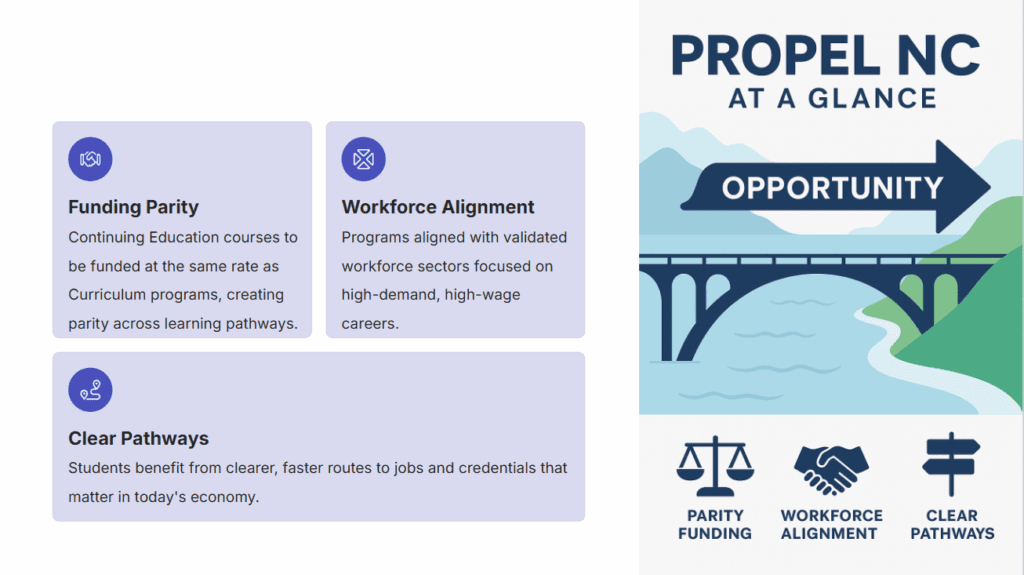
One reason Propel NC is tied to Workforce Pell readiness is its emphasis on credit stackability. Within the five sectors Propel NC focuses on — information technology, health care, engineering and advanced manufacturing, public safety, and trades and transportation — its goal is for community colleges to think about how to best help students either progress toward a higher-paying job or continue their education.
“There is true accelerated training that can help folks. And if you think about the Propel NC mindset, the united college (model), and the point of Workforce Pell: stackability. Because we know this is a good either entry point or upskilling for an individual,” said Gardner.
The NCCCS also created the new Director of Credit Mobility position in June 2025 to oversee credit pathways statewide, a move complementary to Workforce Pell’s credit stackability and portability requirement.
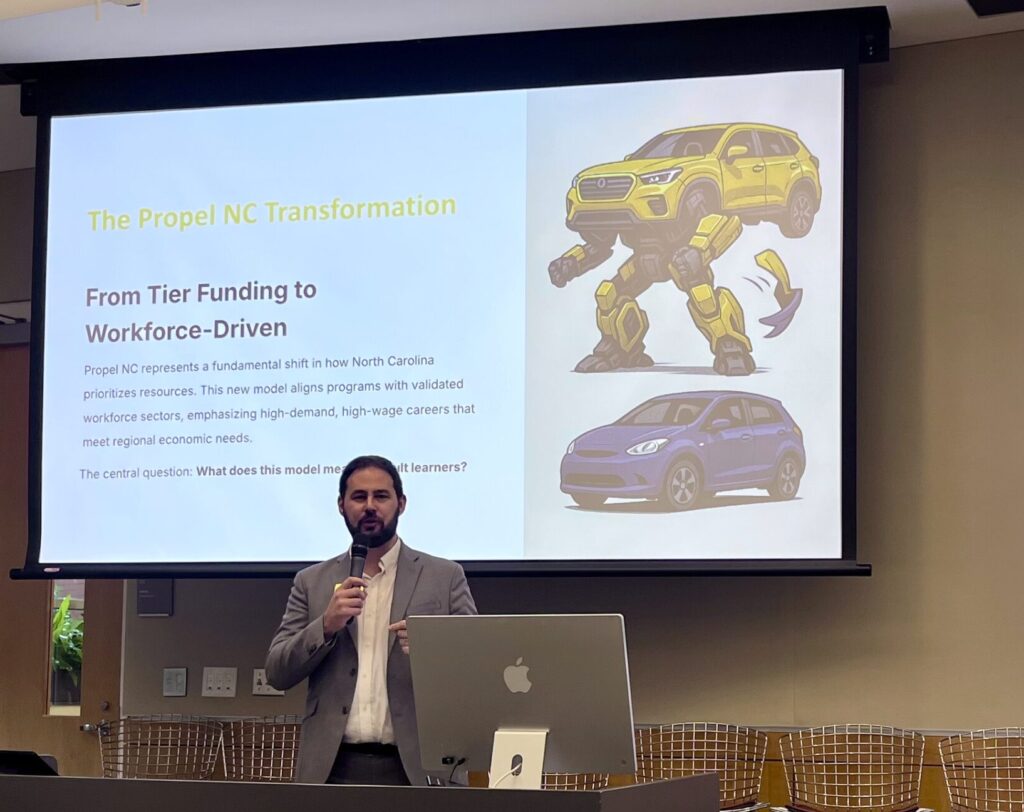
Communication across departments is another key way colleges’ efforts to prepare for Propel NC might aid their implementation of Workforce Pell. Gardner emphasized that departments should be aligned and well-versed in local labor market demands to be able to help refer adult learners to the next appropriate step for them.
“I cannot emphasize enough cross-department collaboration. We’re all reading in the tea leaves with Workforce Pell how closely you all need to align,” Gardner told attendees.
Gardner encouraged colleges to use NCCCS data dashboards to stay up to date on local workforce demands to better inform internal referrals for adult learners across the college.
The Propel NC implementation guide, created by the NCCCS, aims to help community college leaders consider these and other changes their colleges will have to make to prepare for Propel NC.
“We’re moving as a system … but because you all are locally unique, it’s up to you all to implement and ensure success,” Gardner told NC Reconnect community colleges. “We’ll give you the guidelines, the playbook, but you all are the ones that are playing in the game, so please do what you all always do: exceed expectations.”
Other state and industry funding opportunities
Not all of the credential pathways adult learners choose will be eligible for Workforce Pell.
Gardner shared other funding opportunities available to community colleges, emphasizing the possibility to meet students’ financial needs by braiding together funding from various sources.
During the NC Reconnect meeting, Gardner announced that the state’s Short-term Workforce Development Grant has been codified, meaning it will receive $1 million in recurring funds every year to disperse to the 58 community colleges. He urged colleges to spend down the funding, which gives students in workforce continuing education courses up to $750 per course to cover training expenses.
“Act now — it is at your college. Act now,” said Gardner.
Other funding sources Gardner highlighted that will help colleges support adult students are Finish Line Grants, Golden LEAF funding, and the State Employee’s Credit Union’s Bridge to Career program that provides $500 scholarships to 30 students seeking state-regulated or industry-recognized credentials at each community college.
Panelists from community colleges also encouraged colleges to prioritize relationship-building with industry partners, as they dictate the kinds of quality workforce training programs students might be able to participate in.
“Resource development is not just about fundraising. It’s about building relationships. Everything we do has a relationship tied to it — everything,” said Wilkes Community College President Dr. Mike Rodgers.
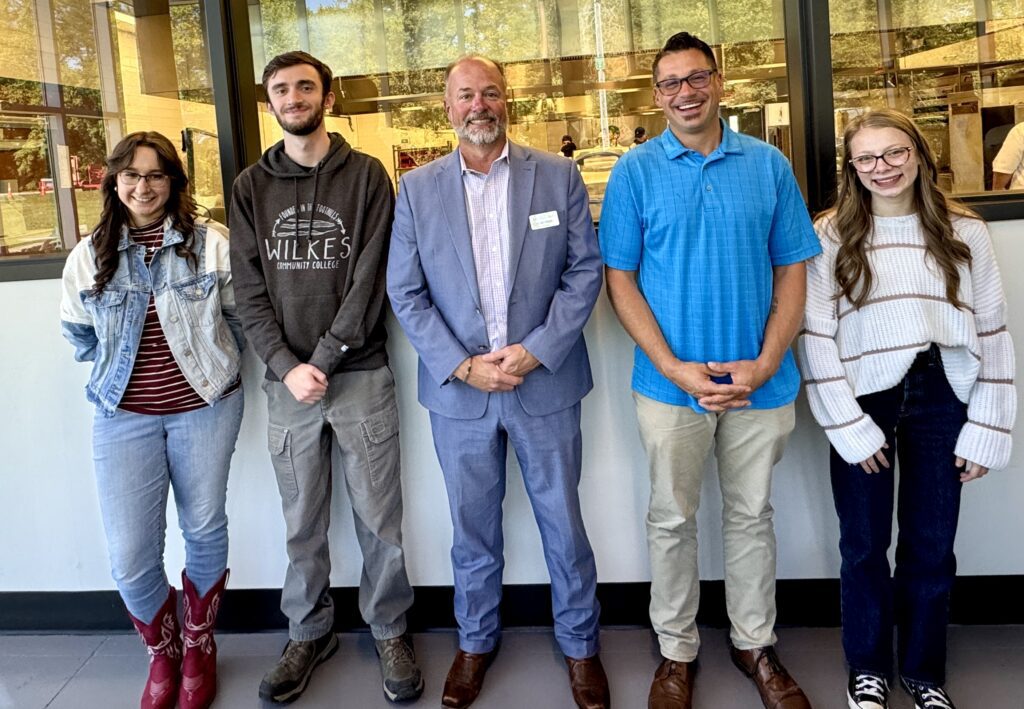
Rodgers shared a success story of an adult learner at Wilkes Community College who, because of these relationships and the college’s coordinated student services, is completing a workforce development credential, will not have to pay for the credential’s exam, and will move into a job after completing their program.
“For an adult learner, success looks differently … so we have to, we owe it to ourselves, to redefine what success looks like,” said Rodgers. “We have to redefine and reimagine education. We owe it to the adult learner, we owe it to ourselves, we owe it to our business and industry, to figure out how to reconnect with those students.”
Recommended reading
